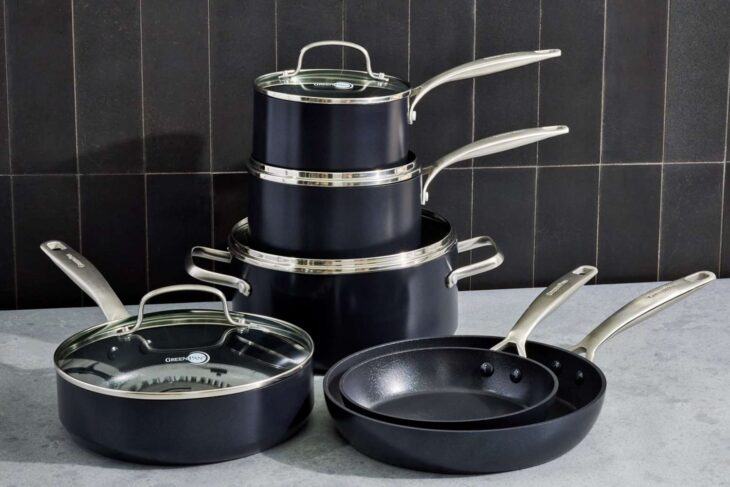
Cookware For Induction Cooking
Unlike gas and conventional electric cooking elements, induction elements do not heat up and then transfer heat to the pot or pan. Instead, they directly heat the pot or pan via magnetic hysteresis loss. While the home cook or restaurant chef has no need to understand the details of magnetic hysteresis. He or she must be aware that induction cooking only works with pans made of a ferrous (magnetic) material and will not work with aluminum, glass or ceramic cookware. In addition, although steel is normally magnetic, some stainless steels are actually non-magnetic alloys unsuitable for induction cooking.
Because of induction’s growing popularity, many manufacturers whose cookware is compatible with induction cooking will state this in their product descriptions. In addition you can perform an easy test: generally speaking. If a magnet sticks to the bottom of a pot or pan then that pot or pan can used for induction cooking. Conversely, if a magnet does not stick to the bottom of the pan. Then the pan cannot used for induction cooking.
In addition to being magnetic, a pot or pan used for induction cooking must have a flat bottom. Therefore traditional round-bottomed woks are not suitable for induction cooking, nor are pots or pans that have extremely warped bottoms. Several manufacturers make Chinese-style induction cooktops specifically designed for round-bottomed woks. However these cooktops are suitable only for woks and can’t be used with flat bottomed pans.
Cast Iron
The materials suitable for induction cooking fortunately turn out to among the most commonly used. And effective cookware materials: cast iron, carbon steel and some stainless steel. The first of these types, cast iron, is a very traditional type of cookware and is well suit for a wide range of applications. Cast iron has a high heat capacity compared to many other cookware materials. So cast iron pots and pans tend to be relatively slow to heat up. And, once heat, tend to hold heat longer once the heat source is remove.
This property is advantageous for many types of cooking (for example, non-enameled cast iron skillets excel. At browning and searing meat because of this property). But cast iron cookware is not ideally suite for dishes that require rapid temperature changes. Also, cast iron cookware must seasoned to protect against rust, to prevent acidic food from reacting with the cookware. And to prevent food from sticking (a well seasoned cast iron pan is almost as stick resistant as a modern “non-stick” pan). And care must taken when cleaning cast iron cookware not to remove the seasoning.
